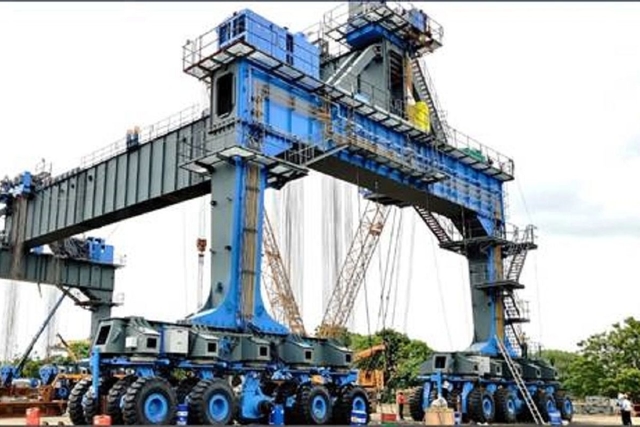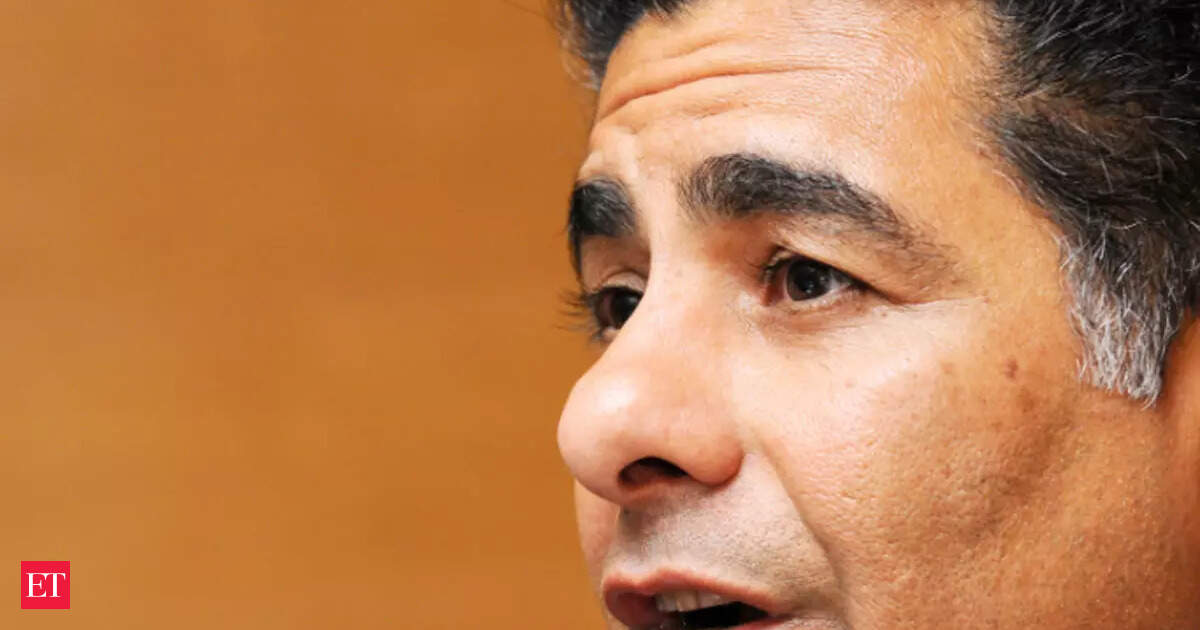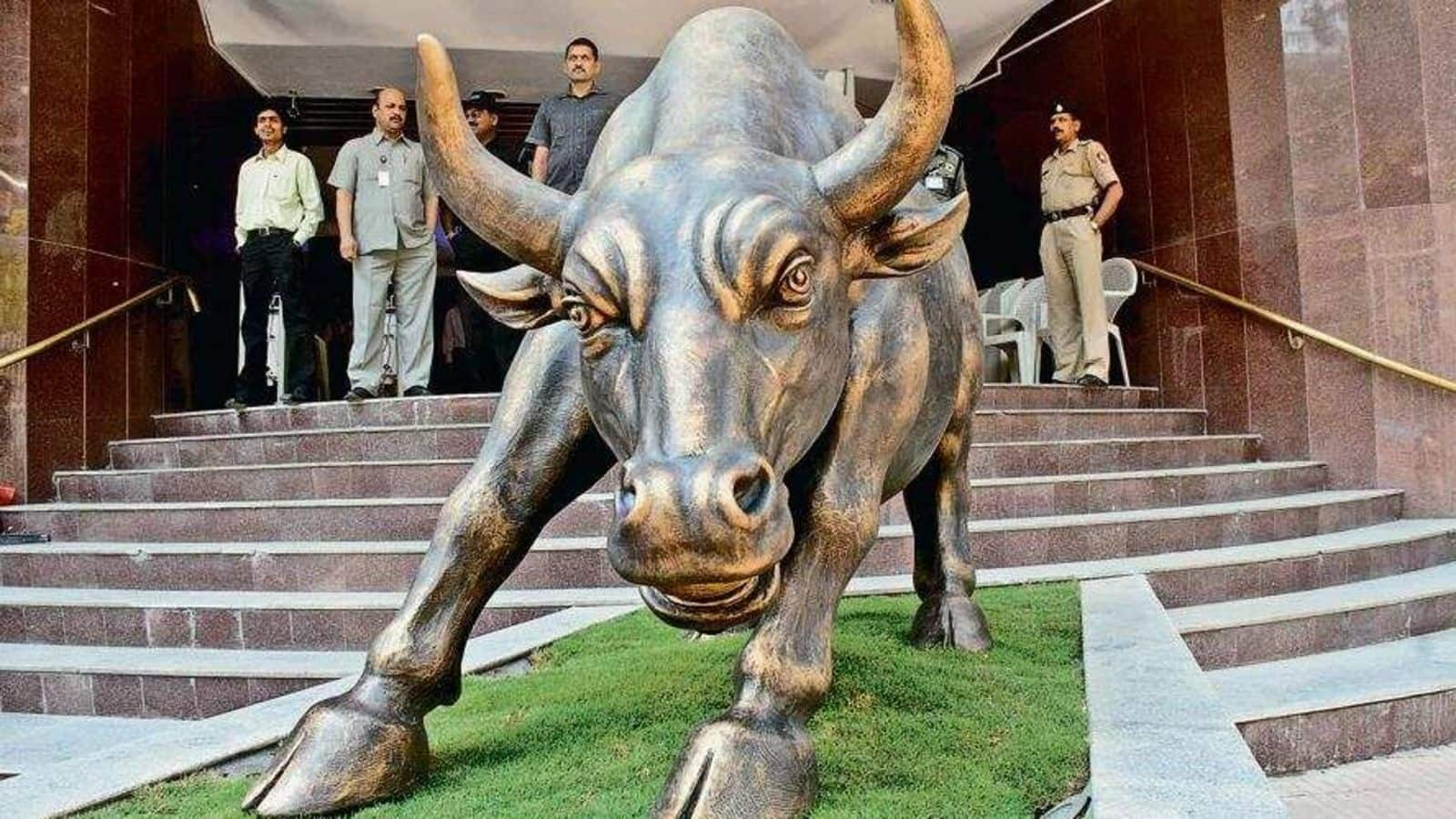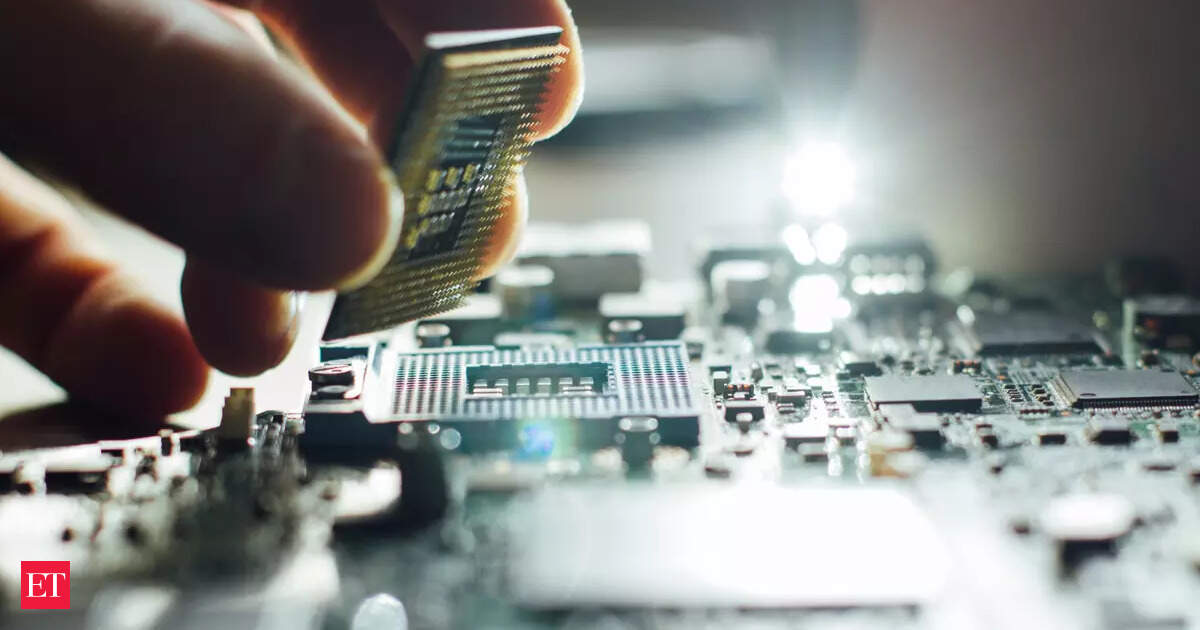You are using an out of date browser. It may not display this or other websites correctly.
You should upgrade or use an alternative browser.
You should upgrade or use an alternative browser.
One of our best.....Rest in peace sir.

 www.moneylife.in
www.moneylife.in

 www.thehindubusinessline.com
www.thehindubusinessline.com

Why Indians Need To Understand the Importance of Gajendra Haldea’s Contribution to the Nation
It is only in India that a whistle-blower and a crusader, whose honesty, integrity and brilliance has saved the country billions of dollars, would be demonised when alive and recognised as the ‘father of infrastructure’ when he is no more.
Gajendra Haldea (1949-2021): A selfless infrastructure expert
News:Gajendra Haldea (1949-2021): A selfless infrastructure expert
My take on the deepest issue plaguing Indian economy (and India as a whole):

 defencehub.live
defencehub.live
Members here may find it interesting to read and give comments on.
How can Artillery Numbers today relate to Universal Education yesterday?
How can Artillery Numbers today relate to Universal Education yesterday? Analysis on the Guns versus Butter impact over time. By: "Nilgiri" Prelude https://defencehub.live/threads/indian-army-artillery-archive.1564/page-4 "Crixus": 100 (Vajra SPH) is too less if you compare the eastern...
 defencehub.live
defencehub.live
Members here may find it interesting to read and give comments on.

'We are fast progressing in FTA discussions with UK, UAE': Piyush Goyal
Highlighting the role that traders play, commerce minister Piyush Goyal said that they are "the twin pistons powering the economic growth engine of the nation".
If this plan takes off ,we can get more and more fta and manufacturing .
Both are quite large market for us and uae is one of top trading partner so fta makes sense .
Once fta happens we can replace many countries in some sectors and create a duopoly

'Made In India' Giant Equipment Launched To Build Mumbai - Ahmedabad Bullet Train Corridor
Union Minister for Railways, Ashwini Vaishnaw flagged off indigenously designed and manufactured 'Full Span Launching Equipment-Straddle Carrier and Girder Transporter' to expedite the construction of the viaduct for bullet train project.The full span launching equipment of 1,100MT capacity is...
swarajyamag.com

Breakingviews - India Insight: Elbows out on world’s factory floor
“Make in India” could start to live up to its motif of a lion on the prowl. Local and foreign companies are queuing up to tap incentives for creating large onshore manufacturing capacity in electronics, solar panels, pharmaceuticals, advanced batteries, specialty steel and more. Samsung...
MUMBAI, Sept 6 (Reuters Breakingviews) - “Make in India” could start to live up to its motif of a lion on the prowl. Local and foreign companies are queuing up to tap incentives for creating large onshore manufacturing capacity in electronics, solar panels, pharmaceuticals, advanced batteries, specialty steel and more. Samsung Electronics (005930.KS), Apple (AAPL.O) suppliers, and local tycoons will claim a share of benefits worth as much as $27 billion. The enthusiasm for Prime Minister Narendra Modi’s gambit to spur production is striking after years of false starts to find India space on the world’s factory floor.
Modi’s original campaign, launched in 2014, aimed for manufacturing to account for 25% of GDP by 2022, but the level is stuck at around 17%. Although foreign direct investment is increasing, India’s inflow was about a quarter of China’s in 2019, per UNCTAD data. Red tape and rickety infrastructure keep companies away.
The new “Production-Linked Incentive” scheme attempts to compensate for those costly inefficiencies. New Delhi approved the first set of local and foreign applicants in October for electronics and is busy expanding the initiative to new sectors.
It offers annual payouts, based on a percentage of revenue generated, to qualifying companies for up to five years. The quantum varies across sectors but mobile phone makers, for example, could get a sum equivalent to 6% of sales income. That’s significant: Taiwan-based Apple supplier Hon Hai Precision Industry (2317.TW), better known as Foxconn, earned a net profit margin of just 2% on its global operations in 2020.
Scale is one prerequisite for global competitiveness, but to stop companies from flooding markets with poor quality goods, New Delhi pays only if sales targets are met; past schemes focused on amounts invested. India is also encouraging exports by setting high minimum invoice prices. In one of the mobile phone categories, manufacturers must sell handsets for over $200 each, more than most Indians can afford. But by ensuring that the rewards aren’t explicitly contingent on export quotas, it can avoid a fight at the World Trade Organization.
PICKING WINNERS
New Delhi is following in China and South Korea’s footsteps by choosing winners and its largesse underscores official urgency to create jobs and reduce dependence on imports, especially from its aggressive Chinese neighbour.
Beijing can wreak economic havoc in India. Shipments get delayed in retaliation when border tensions flare up, and the risk of disruption is growing. Imported components - where China is a top supplier – account for about 80% of India’s local demand for IT hardware, solar panels, and telecom network kit; 40% of its consumption of pharmaceutical ingredients, and more than one fifth of its consumption of alloy steel and auto components, per Enam Asset Management.
Foreign companies too are looking for new places to house factory lines. The pandemic and rising trade tensions spotlighted China’s outsize role in global supply chains: The People’s Republic boasts the highest share of any country, accounting for about 15% of the global exports of goods in 2020, compared to India’s sub 2%, per UNCTAD data.
Modi has the advantage of friendly ties with the West. Cheaper wages compared to most peers are attractive too. However, higher electricity costs and other burdens offset India’s low labour costs, leaving it on rough competitive par with Indonesia, China and Thailand, per a UBS report led by economist Tanvee Gupta Jain.
There could be big gains. The Swiss bank expects India’s share of Apple’s global supply chain will grow from almost zero to as much as 30% within two to three years, starting with the iPhone. Contract manufacturers for the U.S. behemoth including Foxconn, Wistron (3231.TW), Pegatron (4938.TW) have qualified for the scheme. Given India is a tiny end market for Apple, their applications suggest India can move beyond assembly of low value models to making higher-value products.
Other measures are conducive too. New Delhi has slashed corporate tax, making it as low as 15% for new manufacturing facilities. Modi has laid out plans to spend $1.4 trillion on infrastructure to lower business costs. What’s more, after opting out of the China-backed Regional Comprehensive Economic Partnership last year, which at that time amounted to the world’s biggest free trade bloc by GDP, New Delhi is racing to secure bilateral deals including with the UK and Australia.
HIGH STAKES POLICY
The risk is New Delhi over-indulges in carrots and over-uses the stick. On top of the inducements, New Delhi has been raising import tariffs. The latter will lift input costs throughout the economy; Pranjul Bhandari, HSBC’s chief economist in India, warns that past attempts to simultaneously substitute imports and promote exports have backfired. The policy may also shore up giants in select industries while widening the gap with small- and medium-sized ones.
Another danger is that politicians end up extending the incentives beyond the five-year period. South Korea’s Samsung, which signed up for the scheme, hit its output targets for mobile handsets in the first year, but other companies missed and lobbied to roll over benefits.
Jobs may be in short supply too. Automation means modern manufacturing requires fewer people. Take Uber’s (UBER.N) local rival Ola. Its electric vehicle business is likely to apply for incentives in battery cell manufacturing, possibly alongside Mukesh Ambani’s Reliance Industries (RELI.NS), Tata Chemicals (TTCH.NS) and a Japanese venture backed by Suzuki Motor Corp (7269.T). All are racing to set up new businesses as Modi sets ambitious vehicle electrification and clean energy targets. Such cells will power vehicles like those churned out of Ola’s new Future Factory. But while the-facility will create some 10,000 jobs, there will be over 3,000 robots too.
New Delhi’s cleverly designed payouts could prove a winner. But if Modi doesn’t make it generally easier to do business in India, or fails to follow through on his infrastructure upgrade - funding for which depends on ambitious plans to monetise government assets - the scheme could end up being an expensive and ugly temporary fix.
Follow @ugalani on Twitter
CONTEXT NEWS
- India’s cabinet on July 22 approved plans for a production-linked incentive (PLI) scheme for manufacturing specialty steel that will cost the government 63.2 billion rupees ($866 million) over five years.
- The scheme is expected to attract 400 billion rupees of investment and increase capacity of specialty steel, the government added.
- India in February announced it would spend a total 1.97 trillion rupees, about $27 billion, on the PLI scheme across 13 sectors with the aim to create national manufacturing champions and generate employment opportunities.
- Sectors covered include pharmaceutical drugs, telecom products, white goods, solar energy components, and advanced batteries.
Editing by Pete Sweeney and Katrina Hamlin
@Nilgiri how good is it ??
'Made In India' Giant Equipment Launched To Build Mumbai - Ahmedabad Bullet Train Corridor
Union Minister for Railways, Ashwini Vaishnaw flagged off indigenously designed and manufactured 'Full Span Launching Equipment-Straddle Carrier and Girder Transporter' to expedite the construction of the viaduct for bullet train project.The full span launching equipment of 1,100MT capacity is...swarajyamag.com
Chinese system works fastest

India's forex reserves grow $8.895 bn to new record high of $642.453 bn
Foreign currency assets (FCAs) accounted for the bulk of growth during the week, rising $8.213 billion to $579.813 billion
www.livemint.com
India's foreign exchange reserve grew $8.895 billion to reach new record high of $642.453 billion in the week ended September 3, 2021, showed data shared by Reserve Bank of India (RBI).
I would imagine it is cooperation with Japanese heavies like Mitsubishi, so should be even better.
LT has a long term partnership with Mitsubishi in boilers and steam turbines for example.

'Made In India' Giant Equipment Launched To Build Mumbai - Ahmedabad Bullet Train Corridor
Union Minister for Railways, Ashwini Vaishnaw flagged off indigenously designed and manufactured 'Full Span Launching Equipment-Straddle Carrier and Girder Transporter' to expedite the construction of the viaduct for bullet train project.The full span launching equipment of 1,100MT capacity is...swarajyamag.com
Good recovery underway to pre-pandemic level and hopefully more:
Hmm some interesting underlying survey numbers...

 economictimes.indiatimes.com
economictimes.indiatimes.com

FDI key to India's aspiration to be a USD 5 trillion economy, says Deloitte CEO
The CEO of the top multinational professional services network said, "FDI, I believe, is the key to India's aspiration to be a USD 5 trillion economy and I think that is eminently doable. I am certainly a very big proponent of India and what can be accomplished."
Folks interested in Indian economy should have a read of these and I can do a QnA here as required:
Is India’s market-cap headed towards $5 trillion?
New, tech-savvy investors with higher tolerance for risk can make the rapid expansion of market cap possible

Sensex milestones to 60,000: How much wealth you would have made
Indian shares scaled record highs on Friday, with the benchmark S&P BSE Sensex topping the 60,000 level for the first time

India unicorns to provide wealth creation opportunities: Morgan Stanley - The Economic Times
Indian unicorns that are collectively valued at around $300 billion are likely to line up for listing on stock exchanges, creating manifold opportunities of wealth creation, senior officials of Morgan Stanley say.

Tiger Global-led $100M investment makes Apna India's fastest unicorn | TechCrunch
A 22-month-old startup that is helping millions of blue- and gray-collar workers in India learn new skills and find jobs has become the youngest firm to

India accelerates talks with Taiwan on $7.5-billion chip plant, trade deal
Officials in New Delhi and Taipei have met in recent weeks to discuss a deal that would bring a chip plant worth an estimated $7.5 billion to India to supply everything from 5G devices to electric cars.
India and Taiwan are in talks on an agreement that could bring chip manufacturing to South Asia along with tariff reductions on components for producing semiconductors by the end of the year, people familiar with the matter said, a move that may spark fresh tensions with China.
Officials in New Delhi and Taipei have met in recent weeks to discuss a deal that would bring a chip plant worth an estimated $7.5 billion to India to supply everything from 5G devices to electric cars, the people said. India is currently studying possible locations with adequate land, water and manpower, while saying it would provide financial support of 50% of capital expenditure from 2023 as well as tax breaks and other incentives, the people said.
Officials in Taipei wanted quick progress on a bilateral investment agreement that would include tariff reductions on dozens of products used to make semiconductors -- a precursor to a broader trade deal also under consideration, the people said.
The people asked not to be identified to discuss negotiations that were currently ongoing. The Office of Trade Negotiations under Taiwan’s cabinet declined to comment, while a spokesperson for India’s trade ministry didn’t immediately respond to a text message.
The trade talks come at a time when democracies across the world are boosting economic and military links to stand up against an increasingly assertive China. While Taiwan has long sought a trade deal with India, officials in New Delhi had been hesitant to anger Beijing, which claims the island democracy as its territory.
The discussions have accelerated in recent weeks as U.S. President Joe Biden seeks to shore up supplies of chips, strengthen supply chains among democracies and improve military capabilities in the region. On Friday, he met Indian Prime Minister Narendra Modi along with the leaders of Australia and Japan as part of the Quad meeting, a group that is countering China’s influence.
India has also taken a bolder stance against China since a protracted border standoff following violent clashes in 2020 in which at least 20 Indian and four Chinese soldiers were killed.
While India and Taiwan are laying the groundwork to discuss a comprehensive trade deal covering goods, services and investments, officials in Taipei are seeking to revise the investment deal to show some early progress.
India has sought to lure high-technology investments as it seeks to become more self-reliant on chips, while Taiwan wants to strengthen its diplomatic presence around the globe as it pushes back against the pressure from China. Beijing has vowed to work toward unifying the island democracy with the mainland, even by force if necessary.
Chip shortages have delayed the much-anticipated launch of a smartphone by billionaire Mukesh Ambani’s Reliance Industries that has been co-engineered with Google. Currently India imports almost all semiconductors to meet demand estimated to reach around $100 billion by 2025 from about $24 billion now.
Taiwan has welcomed cooperation between the two sides on semiconductors although it is still evaluating the proposal given a lack of ecosystem for setting up a chip fabrication plant in India, people familiar with the matter said. The Taiwan side has flagged concerns on the supply of water and electricity, and suggested that it may be more feasible for India to start creating a chip design sector first before proceeding to building fabs, according to one of the people.
India and Taiwan in 2018 signed a bilateral investment agreement to promote investment flows and expand economic ties between the two nations. Trade between them stood at $5.6 billion in the fiscal year ended March, according to India’s trade ministry.
A video on some of the earlier story w.r.t India:
Some previous material of interest for readers to continue if they would like:
Some previous material of interest for readers to continue if they would like:
The ATMP side is for electronics manufacturing. The article mentioned "and semiconductors". The CEO obviously just read out what he knows and has less idea on the layers involved in semiconductor manufacturing and he doesn't need to know the technicalities.
I have enough contempt against Indian MNC even though they were rich enough in 90' and early 2000, they did not take a damn worthwhile effort towards electronics manufacturing or chip manufacturing. Companies which started in the last 10 years have raised twice or thrice the valuation of the 100 history old companies. Just proves my point that Indian MNC are purely after consumer profits and did not think of overall vision which could have been beneficial to the company and the nation in large.
I mean a company like Foxconn was probably making 17B dollar revenue back in 2004. Tata made some 40B revenue in the same timeframe. Now Foxconn makes 180B in revenue and Tata around 112B. They made some stupid acquisition in Europe instead of developing Indian steel sector. It took nearly 11 years to incorporate technologies from Jaguar Land Rover and incorporate them in local Tata cars cos they didn't want to spend money or provide quality to Indian consumers. Same goes for Birla,Bajaj, Godrej etc etc.
India is inexplicably part of Chip and Hardware/Firmware design ecosystem. All top chip companies design stuff here, create protos in US Fabs and then send it here for testing. So it's not like we don't have a base. Infact we even have quite a lot of Chip companies start ups in Bangalore and Chennai. Jio was looking to acquire a company in chip design around 2 years back and they did. Smaller one but with design experience for bigger guys.
Foundary is capital intensive. We need not have an foundary for top end chips but for basic MCs, timers, oscillators, memory, communication etc. We don't even need to design them. Very very older design which are still being used today, the company can pay a very nominal license fee and start manufacturing in your own damn name. There are lots of ICs like that. The problem being India needs an huge electronics manufacturing base to make use of the chips being manufactured. We do, and we have improved by leaps and bounds in that field. But the constant complaint I hear is, India is still not cheap enough to manufacture. We need to do more.
But I hope these tiny steps and we have a one huge foundry in the next 10 years. It's better than nothing obviously.
Launch a Semiconductor Supply Chain Initiative: Quad partners will launch a joint initiative to map capacity, identify vulnerabilities, and bolster supply-chain security for semiconductors and their vital components. This initiative will help ensure Quad partners support a diverse and competitive market that produces the secure critical technologies essential for digital economies globally.
the should put the semiconductor agenda on top of the other two.
Rajendra Chola
Well-known member
I wont celebrate till it's confirmed......
Last edited by a moderator:



